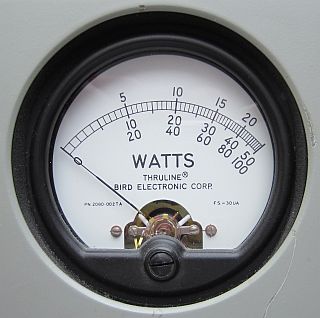
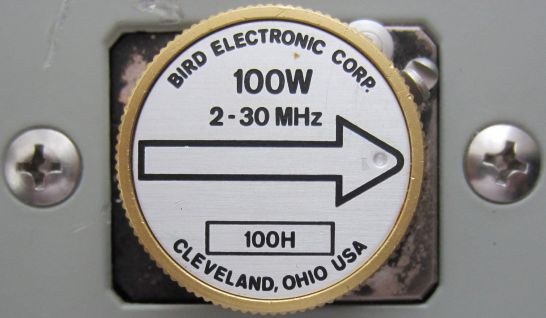
BIRD 43 ACCURACY SUSCEPTIBLE TO TEMPERATURE
Bram Bottema (SK 01-apr-2021), SM0FLY, PA0BRM April 2012


PURPOSE
This paper describes Bird 43 Wattmeter's power reading in dependency of temperature. Absolute accuracy is measured as a second parameter as well as the accuracy and reproducibility of the measuring method.
MATERIAL
Accuracy of the above (3) to (6):
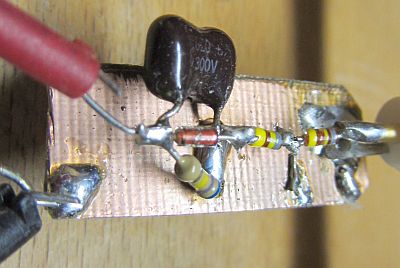
The HF to DC peak voltmeter consists of 3 x 1N4148 diodes in series and terminated with (fig») a 680 pF mica cap. and a parallel resistor of 680 k?. It was checked that no significant output voltage ripple occurred at the chosen measuring frequency.
TEST METHOD
The Bird 43 analogue built-in meter is stated to have a range of 30 µA. A variable PS of 0-30 V was used in series with a resistor of 1 M? to verify the stated range. This full-scale mark was measured to be 28.5 µA, i.e. a deviation of 5%.
The temperature dependency in the range 12-25 °C of the meter without slug was measured to be negligible.
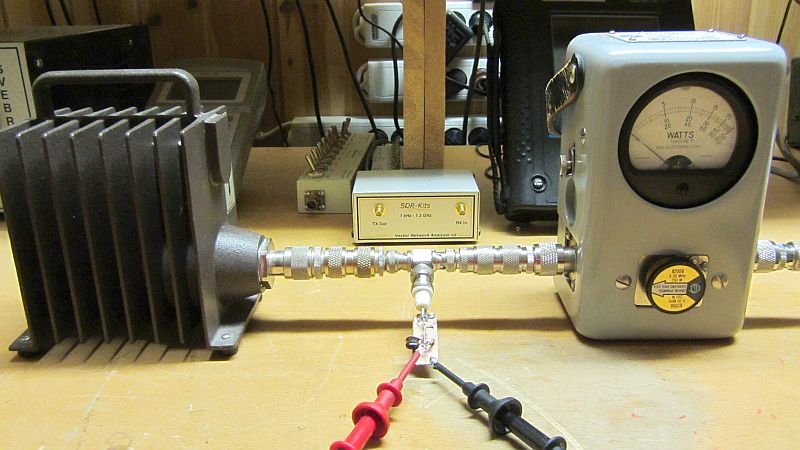
Set-up.
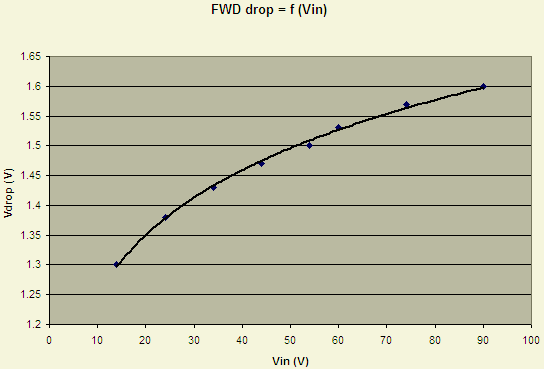
A T-connector is used to tap the RF signal to the peak detector. This set-up shows negligible frequency dependency between 2-21MHz. The test frequency was set at 3550 KHz, which is well within a span where secondary parasitic effects are negligible.
The peak detector is used to measure the absolute power including the voltage loss over the 3 × 1N4148 diodes. Therefore the voltage loss was determined using DC current within the same range as the measuring set-up. The diode voltage drop over the measuring range in the peak detector is plotted in the right figure below.
The laboratory temperature during the tests was between 22.0 - 22.5°C. The slug temperature was varied between 15°C and room temperature.
Taking the diode voltage drop in account, the measured peak voltage is recalculated to a RMS voltage and towards power into the dummy load.
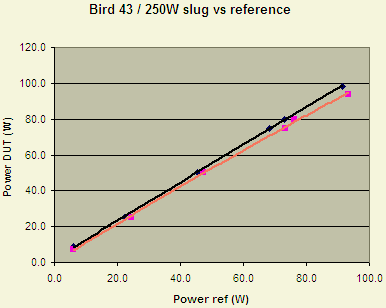 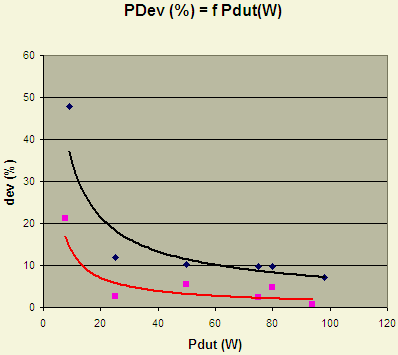 |
The left figure shows the measured vs. Bird 43 power reading at 22°C (black) and 15°C (red) and the right figure the error in % of the reading.
A less reproducible test was done by cooling the slug to -15°C. In this test it was not possible test to have a stable temperature in this range. It was clearly seen that the power reading was approx. 20 W lower compared to room temperature, increasing the error at mid scale to > 20%.
CONCLUSIONS/SUMMARY
The Bird 43 wattmeter is a rugged portable wattmeter with a practical way of changing frequency and power ranges. The slug is an analogue device where certain temperature dependency takes place for what is not compensated. For maximum reproducibility the Bird 43 must be handled within a very limited temperature environment.
FOOTNOTES
The peak voltage test was chosen as accurate attenuation still have tolerances of +/- 0.1dB which equals to a power range of ~5%. A peak voltage test transferred to power is only valid and calculable if the voltage is sinusoidal, therefore the source must have a high harmonic suppression. The frequency dependency of the peak detector is reasonable predictable by the internal capacitance's of the diodes and T-connector. Verifying this with a frequency sweep is a solid method.
The analogue scale of the Bird 43 is compensated for the diodes nonlinearlity in the slug(s) but, as this is temperature dependent, a non-compensating error will always exist in this analogue device.
REFERENCES: http://www.dxstore.com/download/Bird_43_Series_Manual.pdf
![]()